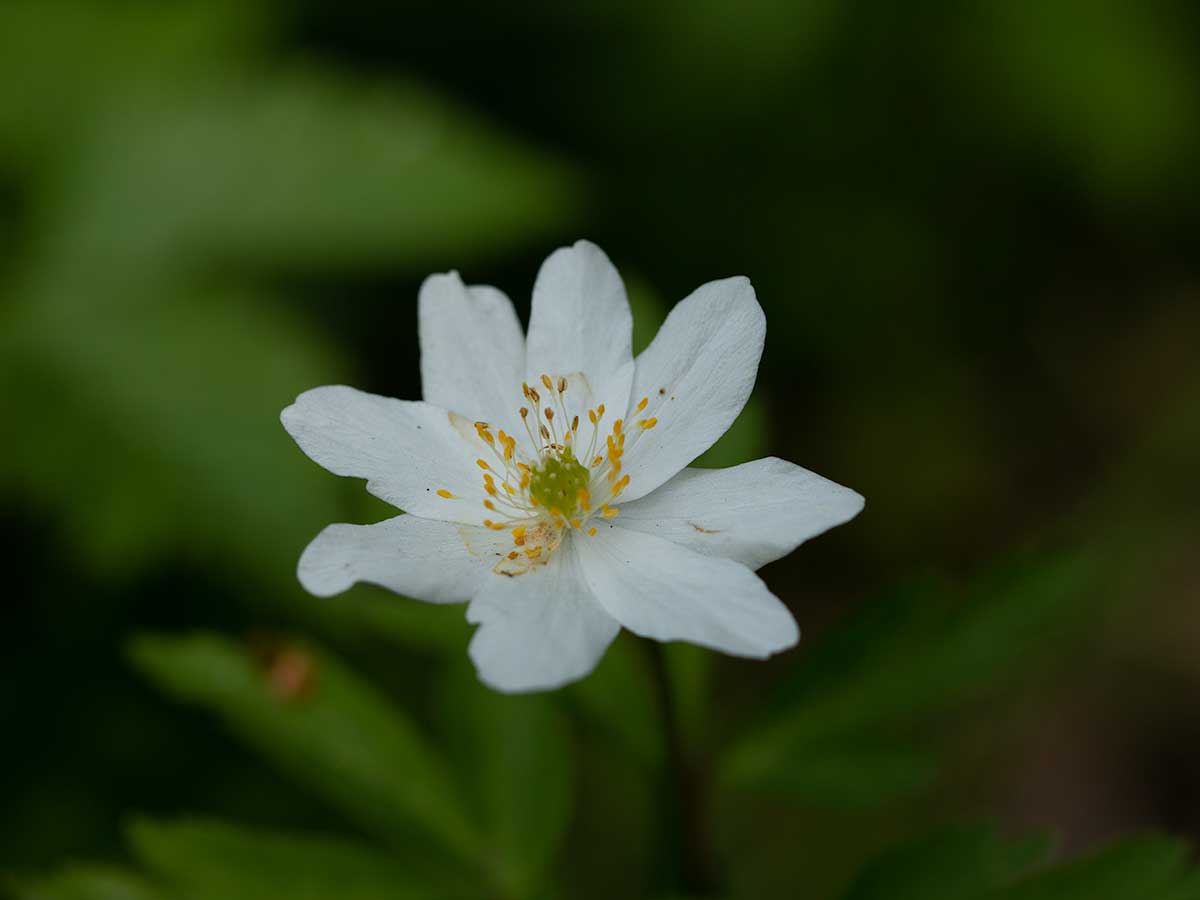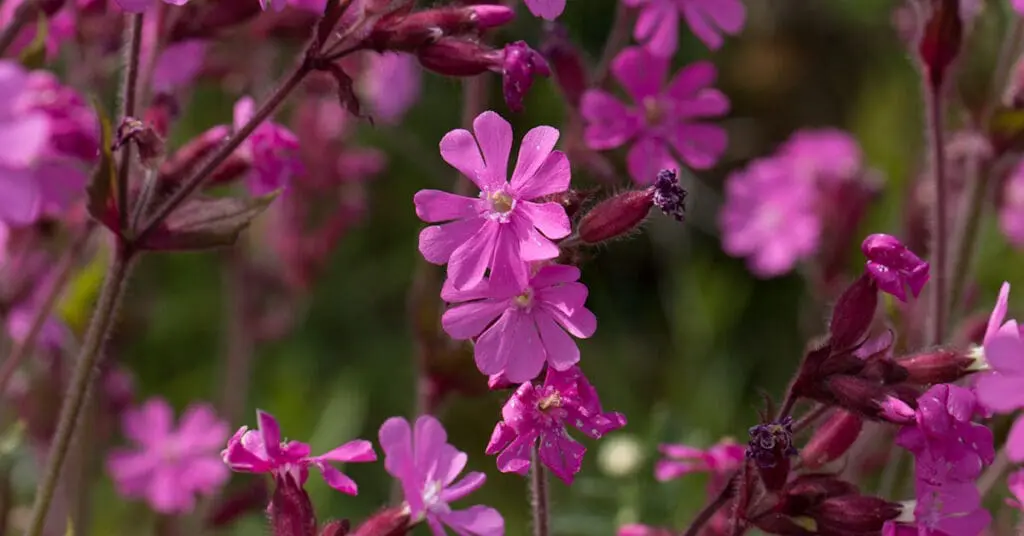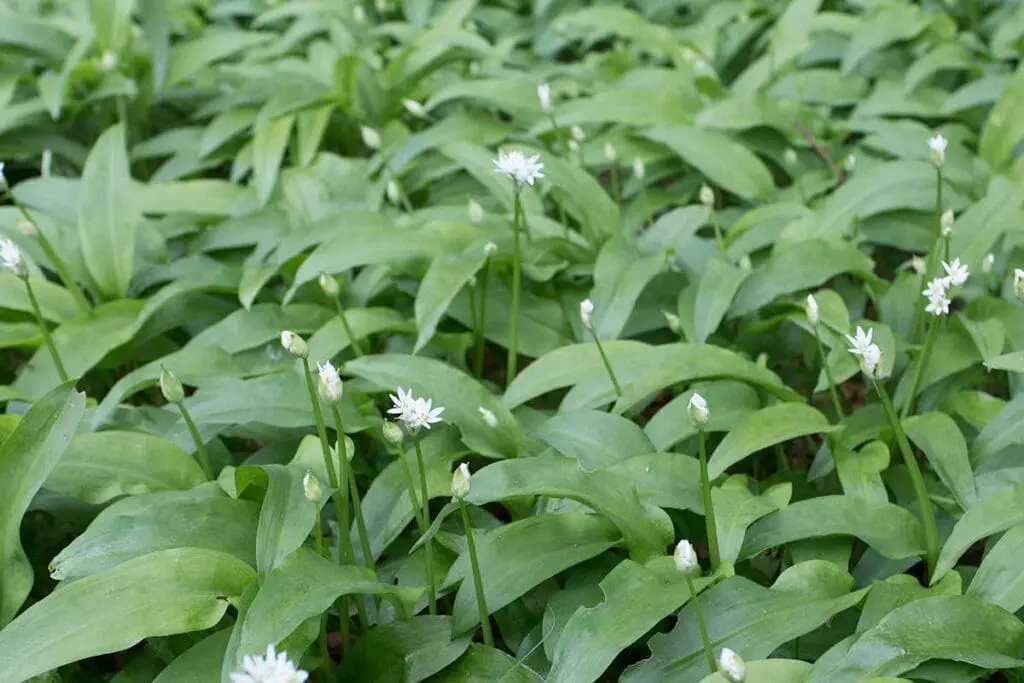- Scientific name: Anemone nemerosa
- Family: Buttercup (Ranunculaceae)
- Found in: Woodland
Wood anemone is one of our first spring flowers. Like many of our native wildflowers, it is also known by many other names: moonflower, wood crowfoot and ‘windflower’, to name a few.
Windflower is directly related to its botanical name derived from the Greek. Greek legend says that Anemos, the Wind, sends his namesakes the Anemones, in the earliest spring days as the heralds of his coming. Other sources claim that the flowers only opened when the wind blew. The second part of the name nemorosa refers to its woodland habitats and derives from the latin ‘nemorosus‘ meaning ‘wooded or covered with trees’.
The wood anemone is poisonous. Although herbalists do not use the plant medicinally nowadays, various parts of this herb used to be recommended for a variety of complaints such as headaches, gout and rheumatism.
Wood anemone are found throughout the UK and in Western Europe, but is absent from much of the Mediterranean. The plant is found in dry deciduous woods, along old hedge banks and occasionally in upland meadows. When wood anemone is found in meadows and hedges, it often indicates the site of a vanished woodland and is sometimes eloquently referred to as a ‘woodland ghost’.
Like many other elements of our woodland flora, such as lesser celandine, wild garlic, bluebell and cuckoo pint, underground storage allows the wood anemone to produce leaves and flowers at the same time, thus enabling it to carry out its annual life-cycle in the few weeks of spring before the shade from the trees above becomes too dense.
It spreads mainly by means of creeping rootstocks, running just below the surface often forming extensive carpets. It flowers from March to May, taking advantage of the early spring sun before the woodland canopy fills in blocking out the light. Once the trees in a wood have rebuilt their spring canopy of leaves, the plant’s flowers wither and fall.
The upright stem of the wood anemone is unbranched and bears a single star-shaped flower. The white flowers have no nectar and little scent as they do not rely upon insects to produce seed. As in all the anemones, there are no true petals. What appear to be white petals are in reality sepals, which have assumed the colouring and characteristics of petals. They are usually six in number. A whorl of three stalked leaves grows halfway up the stem. These leaves are divided into 3-5 leaflets which are in turn deeply cut, resembling those of other members of the buttercup family.
This wildflower is just as charming when growing in gardens. The low-growing wood anemone is equally at home in the shaded border as amongst trees and shrubs in a woodland setting. The plant needs a humus-rich soil. It prefers part shade to shade as well as a moist soil, but tolerates dry conditions during its summer dormancy.
Propagation
From seed
Seed should be sown within a month of ripening, as it deteriorates with keeping. Sow thinly in lines on the soil surface or lightly rake in the seeds in. Keep the soil moist. When large enough to handle, prick the seedlings out into individual pots and grow them on in light shade in the greenhouse for at least their first year. When the plants are large enough, plant them out in the spring. The first flowers are generally produced the first spring after sowing.
By division
The easiest way to propagate Wood Anemone is to divide the roots. The roots which look like reddish twiglets with a diameter of approximately 4mm can be dug up in late summer and treated like other woodland bulbs. A piece of root 3-4cm long should produce a healthy, viable plant.





